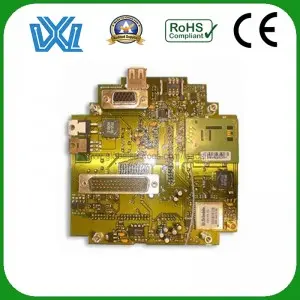In the wider world of electronics, the abbreviation PCB is often used to refer to a printed circuit board. However, for those unfamiliar with the intricacies of this critical technology, the terminology can be confusing and often raises questions such as “what does a PCB mean?” If you find yourself curious about PCBs and want to gain a clear understanding of their fundamentals, you’re in the right place. This blog aims to provide you with an easy to understand explanation about PCBs, their importance and their application in today’s technological world.
Define PCB
Printed circuit boards (PCBs) are vital components in modern electronics. They consist of flat sheets of non-conductive material such as fiberglass that serve as a base for mounting various electronic components. These components are interconnected by a network of copper tracks, called traces, etched into the surface of the board.
1. Structure and function
The main purpose of a PCB is to provide mechanical support and electrical connections between electronic components. It is responsible for ensuring precise connections and communications between various components, including integrated circuits (ICs), resistors, transistors, capacitors, and more. Conductive trace patterns on circuit boards help to simplify the flow of electricity so that electronic devices can function properly.
2. Advantages of PCB
Integrating PCBs into electronic devices has several advantages. First, their compact design enables miniaturization, optimizing space within electronic devices. In addition, using a PCB also reduces the chance of errors during assembly, as components are strategically placed on the board, which simplifies the manufacturing process. PCBs also offer greater durability compared to other wiring methods. Soldered components ensure a secure connection and reduce the risk of loose wires or incorrect connections.
3. Types of PCBs
PCBs may vary in complexity, design, and number of layers to meet the needs of specific applications. Some common types of PCBs include single-layer, double-layer, and multi-layer PCBs. A single-layer PCB has a single layer of copper on one side, while a double-layer PCB has copper traces on both sides. Multilayer PCBs consist of multiple layers that are stacked and interconnected through drilled holes called vias, allowing a greater number of components to be integrated and improved functionality.
4. PCB manufacturing process
The manufacturing process of a PCB involves several steps. Initially, the dimensions of the board and the layout of the components are designed using computer-aided design (CAD) software. Once the design is complete, it is transferred to the circuit board through a photosensitive film or protective mask. The exposed copper areas are then etched away using a chemical solution, leaving the desired traces. Finally, the components are mounted on the board and soldered, completing the assembly process.
in conclusion
In summary, printed circuit boards (PCBs) play a vital role in electronics, providing the necessary electrical connections and mechanical support for countless devices. Understanding the basics of PCBs, including their structure, function, benefits, and manufacturing processes, is critical to understanding the complex electronics we encounter every day. As technology continues to advance, PCBs will undoubtedly remain the cornerstone of innovation, evolving to meet new challenges and needs.
Post time: Jun-26-2023

